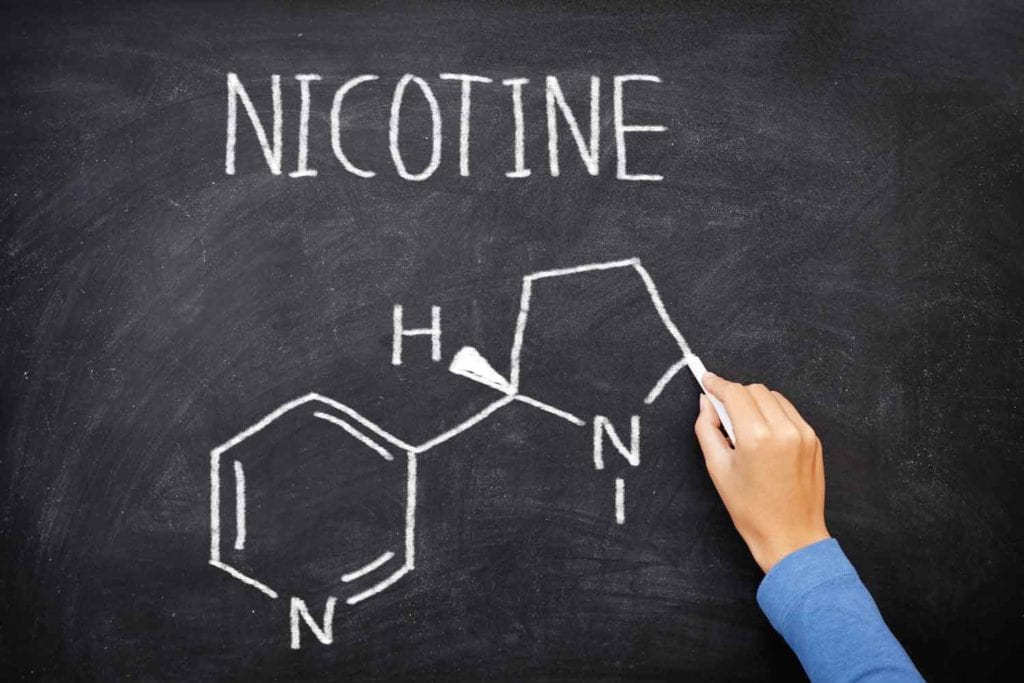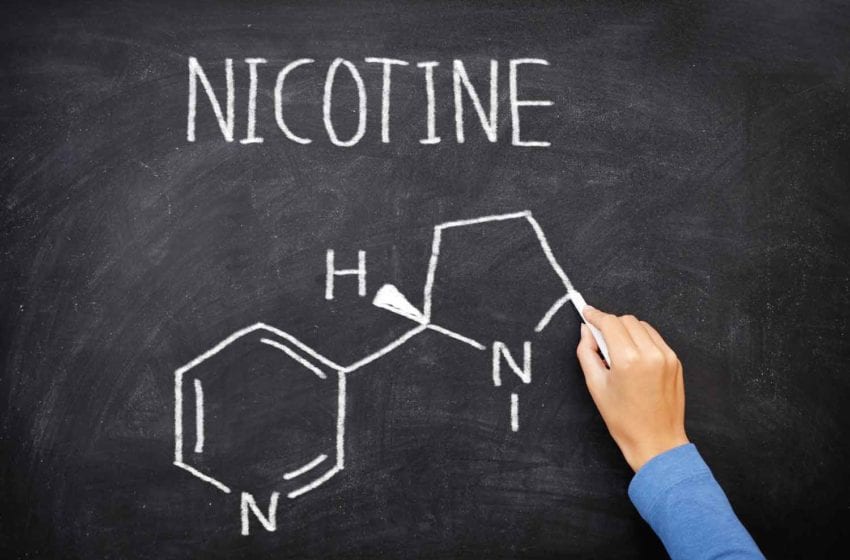
Many policymakers see nicotine as part of the problem; THR proponents see it as part of the solution. Understanding why such deeply opposing views are held also provides a view of the way ahead.
By Barnaby Page
Advocates of tobacco harm reduction (THR) and the industry making THR products are accustomed to fighting battles on multiple fronts—simultaneously contending with the threat of flavor bans, new taxes and misrepresentations of science, for example. But perhaps the most essential battle of all is the one against the demonization of nicotine; it’s possible to imagine vaping continuing to exist without nontobacco flavors, for example (even if it might be a less appealing kind of vaping), and it’s possible to imagine consumers continuing to buy THR products even if taxes hike their price, but it’s not really possible to imagine THR without nicotine.
This means that, while its opponents are not wrong to say that that nicotine is to an extent an initiator and certainly a perpetuator of smoking, it’s also a “friend” as much as an “enemy” in the quest to reduce smoking rates and smoking-related harm. Persuading others, including lawmakers, the medical profession and the public health establishment, to see it this way is a key and decidedly nontrivial task for the THR movement, one that could have profound effects on future policy and regulation concerning THR products and therefore their uptake.
Smoking and Addiction
Opposition to nicotine probably derives, at heart, from two somewhat different but related factors: cigarettes and addiction. First, it’s easy to forget—but essential to remember—that until around a decade ago, nicotine effectively meant cigarettes for most people in most countries. Sure, there were other delivery mechanisms (e-cigarettes were already starting to make their presence known; oral products of different kinds had traction in some places; a few people even smoked cigars or pipes), but the cigarette was dominant … and so for the average person, who in a specialist field like this also includes the average policymaker, nicotine was inextricably tied to smoking, which in turn was inextricably tied to combustible cigarettes.
As a result, it’s not surprising that many people find it difficult to separate the effects of nicotine from the effects of cigarette smoking in their head. (Even some people who ought to know better seem to find it tough.) Meanwhile, public health messaging had for decades reinforced the same point—Superman’s foe, the evil Nick O’Teen, is a classic example.
Plus, and this brings us to the second point, nicotine was not only that generally sinister thing, a “chemical,” but it was one you could become addicted to. Again, it’s understandable that people who weren’t specialists in addiction science wouldn’t realize that the concept itself was a much-debated thing, and people who had grown up in a War on Drugs era when “drug addicts” were seen as an undifferentiated group of miserable, ruined junkies naturally saw addiction itself—regardless of the addictive substance concerned—as a terrible condition.
Again, of course, there are those who ought to know better who use the concept to spread distrust; it amused me a few years ago when the then U.S. surgeon general, Jerome Adams, said that nicotine was “as addictive as heroin.” Leaving aside the whole issue of how you assess comparative addictiveness, the logical corollary here was that heroin is no more addictive than nicotine, but I doubt he would have wanted to spread that as a public health message.
THR advocates need to recognize that the perception is just as potent as the reality.
The Power of Perception
In any case, some definitions of addiction or dependency now stipulate that it must be harmful, and it’s highly questionable whether nicotine—once separated from cigarette smoking—falls into that category. So there’s even a case to be made that nicotine addiction doesn’t exist as a problem in the first place. But the bottom line is that it is widely perceived to be harmful and addictive.
And that is a huge obstacle for THR to overcome. Nicotine is absolutely central to the THR proposition. Indeed, it is founded on the distinction between nicotine and smoking, as famously expressed by Michael Russell when he observed that people smoke for the nicotine but die from the byproducts of smoking. It is the ability to make this distinction that leads to the concept of the continuum of risk—the idea that though different product categories (cigarettes, oral, vapor, heated tobacco, nicotine-replacement therapy [NRT] and so on) may all deliver nicotine, they do so with different risks, with some categories (for example, NRT, pouch and vape) at the bottom of the range while others (all of them involving combustion) are at the maximum.
This concept is hardly news to anyone involved in THR or indeed anyone in the tobacco industry. But it’s worth repeating that it may not only be an unfamiliar idea but an apparently contradictory one to people outside those worlds if they believe that risk is inherent to nicotine use. Before any progress can be made on improving policy and regulation, this is a misconception that needs to be corrected, and for the reasons that I’ve discussed, it can be quite a deep-seated one. Of course it’s illogical—it’s like concluding that because it is very dangerous to drive on icy roads at high speed, it must be equally dangerous to drive on any road at any speed—but being illogical doesn’t mean it’s not thoroughly believed in by many people.
The continuum of risk also means that where public health is concerned, logical regulation would focus on the delivery mechanisms (the icy road and the 90 mph) rather than the nicotine (the existence of cars). Except insofar as it may encourage use of more-risky delivery mechanisms, it doesn’t make sense for nicotine itself to be a prime concern. The on-off debate about very low-nicotine cigarettes (VLNCs) is a vivid illustration of this; there are surely questions to be asked about a policy that retains the dangerous thing (combustion) and concentrates on eliminating the far less dangerous thing (nicotine). To be fair, the research on how consumers might use VLNCs in real life is not yet conclusive, and it is possible they would have a deterrent effect beneficial to public health. But it’s difficult to escape the impression that the image of the evil Nick O’Teen is lurking in the background here as well.

What Regulation Might Look Like
Of course, we can’t realistically expect that lawmakers are going to leave nicotine entirely alone. So if we were going to regulate nicotine the substance—as opposed to characteristics of the delivery mechanisms, and nonproduct issues such as minimum purchase age, advertising and public usage—what areas could be looked at?
We could regulate nicotine content, which we could measure in two ways: either absolutely—the total amount in a cigarette stick or a vape pod, for example—or comparatively, by measuring concentration. The latter makes more sense for product categories where there is notable variation in product size (for example, e-liquid bottles).
We could also look at regulating the nicotine yield, which is the amount of nicotine actually emitted from the product and thus available for consumption by the user; although clearly dependent on the nicotine content level to some extent, this is a more meaningful number in terms of effects. (A hypothetical product with very high content yet very low yield would contain an awful lot of nicotine that might just as well not have existed—it would be irrelevant in any calculation of risk or health impact.)
We could also look at nicotine flux, the rate of nicotine emission—a crucial difference between combustible cigarettes and vapes, for example, and one that strongly affects the actual experience of use. And finally, just to be complete, of course we would want to regulate safety where nicotine is sold in very high concentrations such that accidental consumption of a relatively small amount could have seriously deleterious effects. The perception of risk here is, again, quite possibly exaggerated, but measures like childproofing do nothing to undermine the value of THR, they may prevent some accidents, and many countries have implemented them. This aspect, at least, is a no-brainer ….
But (apart from the childproof caps) does regulating nicotine itself actually solve any problems that aren’t addressed by, for instance, regulating underage purchase—especially if we don’t consider dependency in itself, among adults, to be a problem?
The THR movement will have to work relentlessly to keep the focus on risk profiles of delivery mechanisms, not on nicotine.
The Gateway Effect
The biggest contender for “problem to be solved” could, of course, be the so-called “gateway effect”—the idea that even when less risky forms of nicotine consumption are available, enjoyment of and/or dependency on them (take your pick) could lead the user toward more-risky forms.
A logical riposte would be that though doubtless there are individual cases of such a gateway being passed through (as there are individual cases of almost anything you care to imagine), there is no convincing evidence of it happening on a large scale—and in any case, other measures could deter it. If we want to prevent people progressing from vapes to combustibles, the THR argument would go, surely it’s sensible to make vapes more attractive and combustibles less (whether that’s through differential taxation, marketing restrictions, flavor restrictions or other measures). Going in the other direction—for example, reducing nicotine levels in THR products (which are often less effective than combustibles at delivering nicotine to the body anyway)—would likely just have the effect of making THR less attractive to existing smokers and discourage them from switching.
Nevertheless, the gateway effect is a widespread concern that ties in at an emotional level with the idea of nicotine as an irresistibly addictive substance leading users further and further into its grip. And once again, THR advocates need to recognize that, as is so often in this field, the perception is just as potent as the reality—often more so. Addressing that will be a long and tough task, but the agenda for THR should be clear.
The THR movement will have to work relentlessly to keep the focus on risk profiles of delivery mechanisms, not on nicotine itself. It will have to encourage policy based on proven risk, not on nicotine-specific characteristics such as concentration that in themselves don’t obviously connect to risk. It will have to put forward convincingly the idea that THR products need to be at least as attractive to the consumer as combustible products if their public health potential is to be realized—this means, in effect, undertaking the very difficult task of persuading policymakers that we should encourage nicotine consumption via THR.
And, to achieve all this, it will have to educate not just policymakers but also health professionals, the media and the public. This includes actively countering misinformation, but simply saying people are wrong is clearly not going to be persuasive in itself, and it’s those THR advocates who engage directly and deeply with the “nicotine skeptics” who will end up making the biggest difference.
For not only can nicotine be part of the solution rather than part of the problem, ignoring this is also a risk in itself. We shouldn’t lose the focus on reducing smoking by becoming distracted into reducing nicotine consumption.












